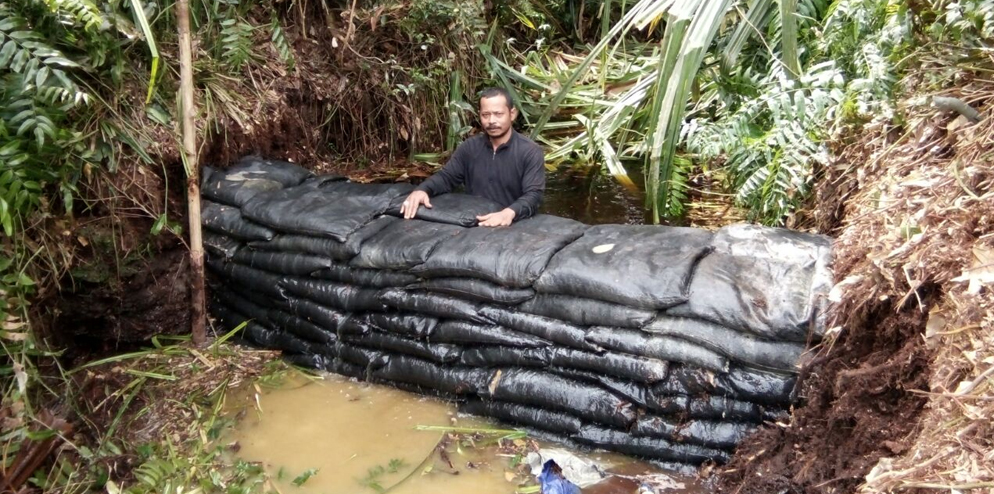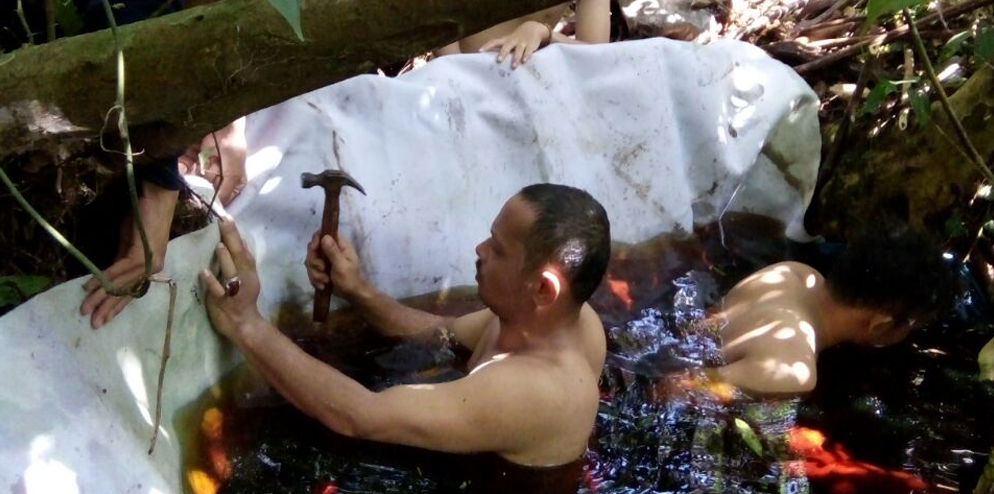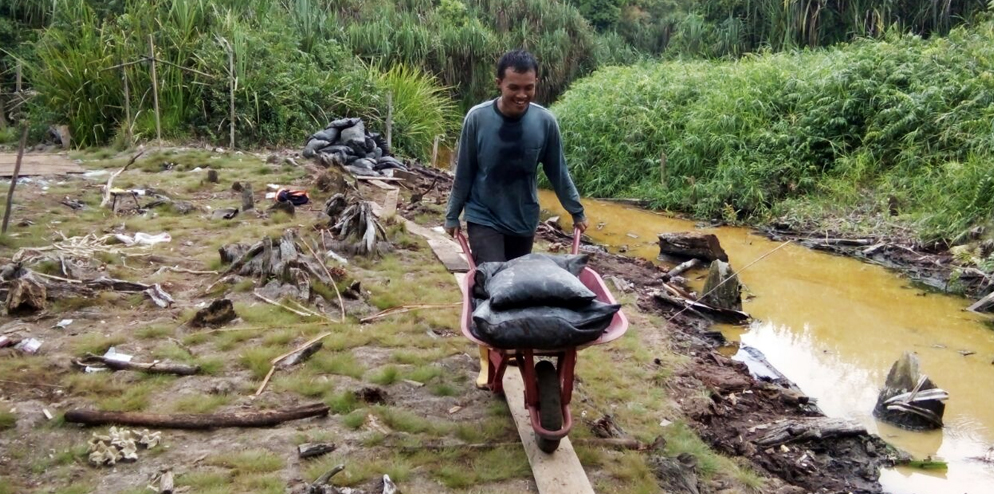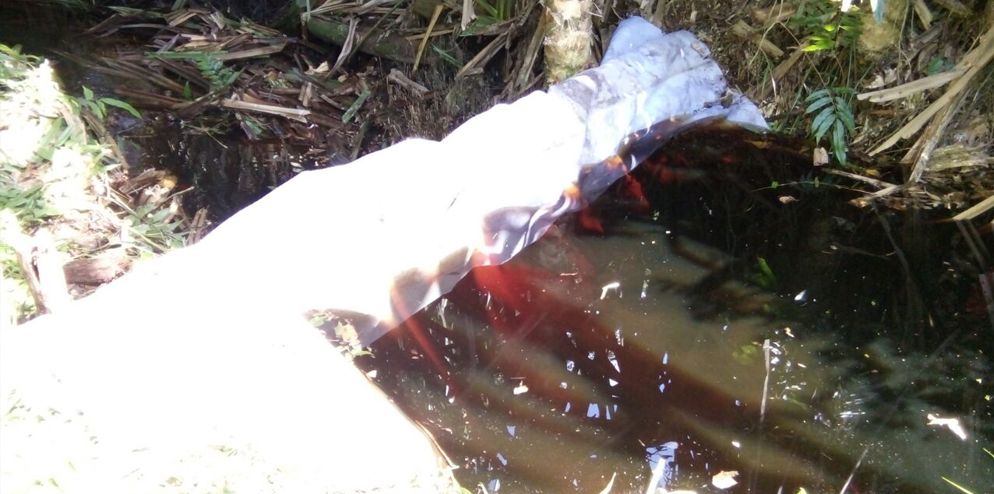August 08, 2016
Key to the restoration effort at Restorasi Ekosistem Riau (RER) area is restoring and managing peat moisture level. RER’s Forest Protection and water management staff are making steady progress in restoring the hydrology of the Ecosystem Restoration concessions, located on the Kampar Peninsula.
Peatland forest soils are formed over thousands of years, and composed of 90% water and 10% organic solids with rainfall as the only source of water.
Since the 1970’s, numerous drainage canals were constructed by hand and/or excavator into the center of the Kampar Peninsula for the purpose of removing logs by commercial timber harvesting companies. Continuous and uncontrolled drainage degrades the peat forest as it lowers water tables, drying the peat, and making it susceptible to fires which emit vast amounts of smoke and green house gases. These unmanaged canals also enable illegal loggers to illicitly remove trees, causing further forest degradation and biodiversity impacts.

RER is taking definitive steps to reverse this process of forest degradation by closing open canals and raising water levels back to seasonal norms. First, open canals must be identified and detailed topographic leveling surveys conducted to identify the length and gradient of each canal. Based on this survey, water managers can identify the number and exact location to build dams in order to raise water levels in 50-cm steps, similar to terraces, along each canal.
The RER Team is in process of closing 4 old drainage canals in 2016 on the Kampar Peninsula. Each drainage canal ranges in length from 1.5 – 2.5 km with a gradient from 2-3 meters, requiring 3-5 dams per canal. Dams are built by hand using 30-kg gravel-bags made from long-lasting geo-synthetic membrane at the mouth of the canal or from reinforced, impermeable felt material at the upper end of the canal.

Dam building takes place in the dry season when water tables are naturally lower due to less rainfall, making it easier for field team to construct the dam. The difficulty with closing old drainage canals is transporting the needed materials for dam construction to the distant and remote locations deep inside the RER area. This requires many days of effort and dedication to move up to 200 pieces of 30-kg gravel bags many kilometers into the forest using small boats, wheel barrows and manual labor of carrying and installing the bags.

The follow up work is to monitor the results of the canal closures with permanent water table monitoring points installed at various distances away from and perpendicular to the canal. To date, RER has identified over 20 canals deep in the forest to be inspected, surveyed and assessed for closure.
RER teams are composed of a combined force of RER water management employees and workers from the local community.

Photo credit: Restorasi Ekosistem Riau Internal Team.